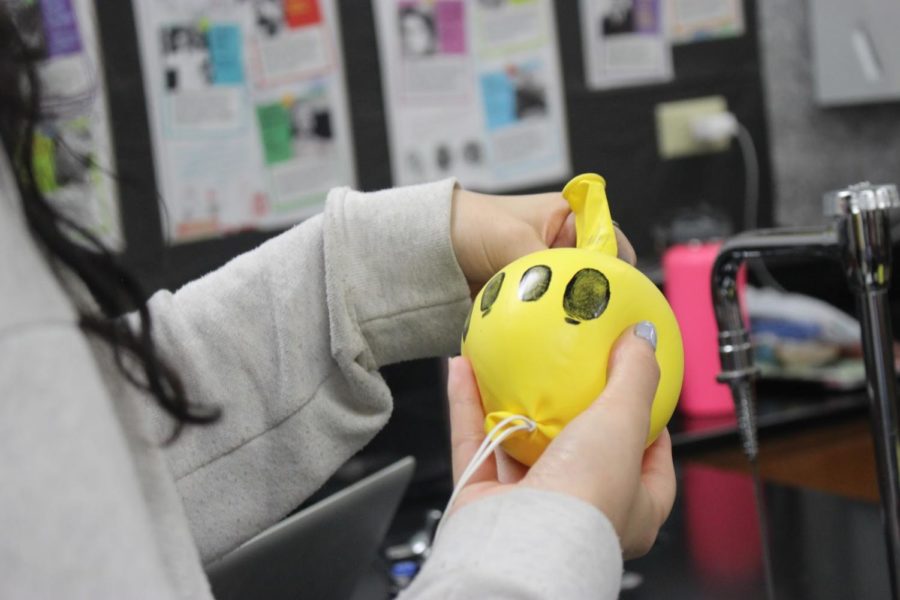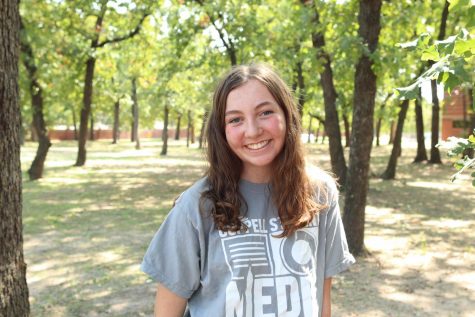Forensics students relate crime analysis to personal lives
Coppell High School senior Riley Deiorio analyzes her fingerprints for a forensics assignment during fifth period today. The class is currently covering different types of fingerprints and how to read them.
October 31, 2019
While spiderwebs, costumes and props decorate the hallways of Coppell High School, Forensic Science students celebrate Halloween by analyzing criminal evidence.
This week, classes are identifying and learning about different fingerprint patterns. Instead of simply looking at fingerprint samples through magnifying glasses, students are applying their skills in real life by analyzing their own fingerprint.
Today, learners coated their fingers in ink and imprinted them onto large balloons. Once the balloons were stretched out, the details in the fingerprints were magnified, enabling students to label and identify their own specific patterns. Beyond the overall shapes of their prints, learners are also able to identify minutiae patterns, which are smaller patterns on specific plots of a fingerprint.
Understanding fingerprint patterns is a necessary skill for forensics students as they can be a crucial source of information for investigations concerning crime scenes. Furthermore, they can keep track of criminal records as they are unique to each individual and can help identify suspects for a particular crime.
“Everyone, even twins, has their very own unique fingerprint patterns,” Forensic Science teacher Larissa Spear said. “It’s not just that we all have loops, but those specific minutiae characteristics within that loop, or within that whorl, that’s what’s going to make us unique.”
Analyzing fingerprints is just a small part of forensics. Forensic scientists must also identify physical evidence such as blood, fibers, DNA and even technology. Mastering these skills takes a lot of practice and dedication, which the students are experiencing through hands-on activities.
“It’s really fun to see how to actually investigate a crime,” CHS senior Samhita Tadi said. “There are so many different aspects that go into investigating a crime, and there are so many things that can throw you off, but there are [also] many things that can lead you to the criminal.”











